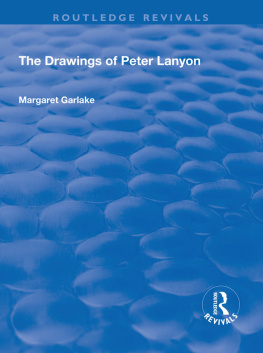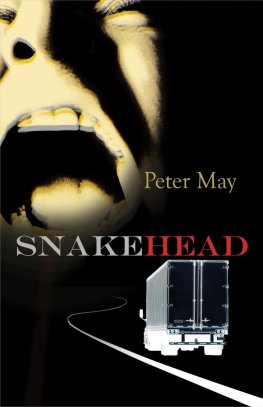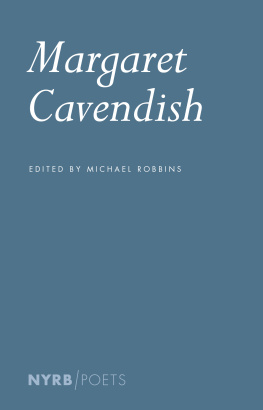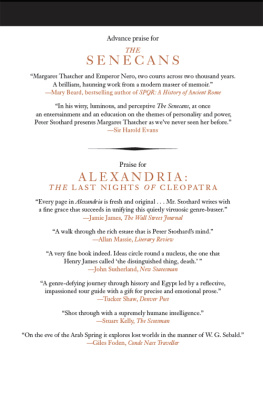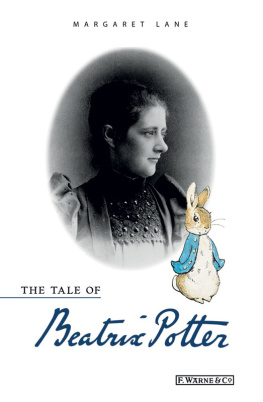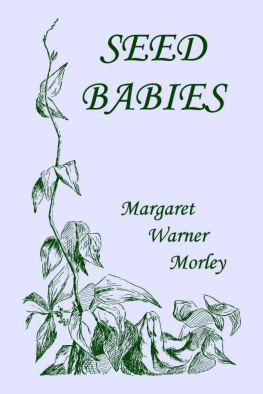The Drawings of Peter Lanyon
The Drawings of Peter Lanyon
Margaret Garlake
First published 2003 by Ashgate Publishing
Reissued 2018 by Routledge
2 Park Square, Milton Park, Abingdon, Oxon OX14 4RN
711 Third Avenue, New York, NY 10017, USA
Routledge is an imprint of the Taylor & Francis Group, an informa business
Copyright Margaret Garlake 2003
Margaret Garlake has asserted her moral right under the Copyright, Designs and Patents Act, 1988, to be identified as the author of this work.
All rights reserved. No part of this book may be reprinted or reproduced or utilised in any form or by any electronic, mechanical, or other means, now known or hereafter invented, including photocopying and recording, or in any information storage or retrieval system, without permission in writing from the publishers.
Notice:
Product or corporate names may be trademarks or registered trademarks, and are used only for identification and explanation without intent to infringe.
Publisher's Note
The publisher has gone to great lengths to ensure the quality of this reprint but points out that some imperfections in the original copies may be apparent.
Disclaimer
The publisher has made every effort to trace copyright holders and welcomes correspondence from those they have been unable to contact.
Typeset in Palatino by Manton Typesetters, Louth,
Lincolnshire, UK.
A Library of Congress record exists under LC control number: 2003057720
ISBN 13: 978-1-138-71061-0 (hbk)
ISBN 13: 978-1-315-19913-9 (ebk)
Figures
Abbreviations used in captions
sdt = signed, dated, titled sd = signed and dated st = signed, with title t = titled
Plates (between pages 54 and 55)
As always I am hugely indebted to members of the Lanyon family, especially Sheila Lanyon who allowed me to invade her house, patiently unframed drawings, located those I could not find, informed, encouraged and, not least, fed me. I could not have begun this book without her help. Andrew, Martin and Matthew Lanyon were immensely helpful in making their collections available to me; I am particularly grateful for Andrew's willingness to transport drawings around the country. I should also like to thank Martin for his ability to come up with an essential photograph at short notice, for his generosity in sharing his invaluable archival information, and his family for allowing me to disrupt their weekends.
Robert Scott and David Gear very kindly made available to me letters from Peter Lanyon to William Scott and William Gear; Ren Gimpel and Victoria Long allowed me to read the Lanyon files in the Gimpel Fils archive; I am most grateful to all of them.
Adrian Glew and the staff of the Tate Gallery Archives were as helpful as always. I am grateful to the librarians of the Royal Air Force Museum, Hendon for their willingness to guide me through an area of which I am totally ignorant; I also thank Katie Sims and Robert Thomas, the librarian of the Institution of Civil Engineers, for their help with identifying the frustum.
Not least, I thank Pamela Edwardes at Ashgate Publishing for asking me to write this book. Her probing - and forbearing - editorial reading was immensely helpful. Maureen Street was a punctilious copy-editor and Katharine Bushell gave much patient help with production. I also thank Jonathan Hughes, Sheila Lanyon, Martin Lanyon, Chris Stephens and an anonymous reader for their comments and suggestions on an early draft. All their interventions in their various ways contributed hugely to whatever merits the book may have.
For practical advice I am grateful to the staff of Jessops; Letty Mooring and Richard Garlake helped to unravel various bits of topography; Peter Garlake, as always, sustained the production process with long-distance encouragement and enthusiasm. Thank you.
- All of the works illustrated are by Peter Lanyon, except those in .
- : Authors as cited
- : Courtesy Andrew Lanyon
- : South Bank Centre, London
- : Sotheby's, London
- : Tate, London, 2001
- : Courtesy Martin Lanyon
- : Photograph courtesy of the Potteries Museum and Art Gallery, Stoke-on-Trent
- : Wakefield City Art Gallery
- Margaret Garlake
1
Drawing in life and art
Drawing is closer to poetry than to prose or painting. It is free to act irrationally, think the unthinkable and ignore convention. Like poetry it can be intuitively understood; it crosses cultures and generations. Drawing can act through grace or awkwardness; it can reveal the most profound truth or conceal it; adopt the starkest linear austerity or the most indulgent excess. It can do all this within a very small space and with the minimal means of pen or pencil on paper. Colour is a bonus to be exploited occasionally.
At the beginning of the twenty-first century drawing is more popular in western culture and more widely scrutinized than it has been for several hundred years; it is acknowledged as an autonomous practice with a high critical status. In November 2000 the first gallery in England dedicated exclusively to drawing opened with the foundation of the Centre for Drawing at Wimbledon School of Art. It is now easy to overlook the implications of David Bomberg's bitter comment, found among his papers after his death in 1957: 'I am perhaps the most unpopular artist in England - and only because I am draughtsman first and painter second.'
The last fifty years has been drawing's period of liberation from the constrictions of a pedagogic discipline. Only Peter Lanyon's earliest drawings display a certain studious inhibition; for most of his too-short career he drew fluently, inventively and variously. His media ranged from silver-point to charcoal, his supports from paper to glass. The drawings themselves, in which the marks are always attuned to the subject, exist in registers implausibly remote from one another. What has the operatic drama of an Atlantic storm gathering over Portreath (see ) within its landscape? The answer lies within the practice of an artist for whom drawing was a profoundly serious activity (though he often drew rather good jokes); who recognized it as the foundation of his imagery; who respected it and exploited it to produce a body of graphic work that is among the most eloquent, accomplished and excoriatingly self-revealing of the mid-twentieth century.
Peter Lanyon (1918-1964) is known primarily as a landscape painter. Except during the Second World War he lived all his life in Cornwall. His father was a photographer and an amateur musician whose own father had been a minedirector in the Redruth area. On their marriage, Lanyon's parents, Lilian and Herbert, moved to St Ives, already an artists' centre, a place that promised a more fulfilling life. Herbert was a socialist, who believed in the arts and his local community and had a vigorous distaste for social hierarchies, convictions retained by his son throughout his life.
After leaving school, having decided to become a commercial artist, Lanyon spent eighteen months at Penzance School of Art and took private lessons with the well-known sea painter Borlase Smart. Many days were spent sketching out of doors, establishing a life-long habit that he pursued enthusiastically on family holidays in the south of France, the Netherlands and, in 1938, South Africa. On this trip of several months with his mother and his younger sister Mary, Lanyon visited relatives involved in mining near Johannesburg and travelled round the Rhodesias (now Zimbabwe and Zambia). Finally, returning to Johannesburg, he exhibited paintings made during the trip together with others that he had brought from England. This, his first solo exhibition, lasted only two days but received a favourable review in a local newspaper.


